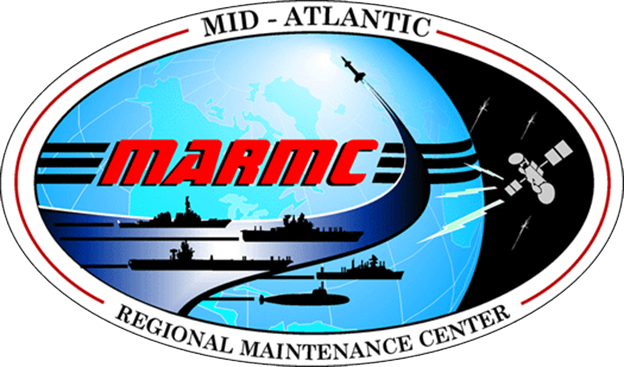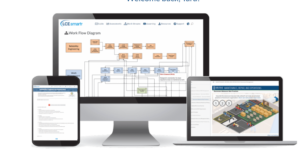Ensuring Functional Air-Conditioning Units Helps to Keep Destroyer at Sea.pdf
The Mid-Atlantic Regional Maintenance Center (MARMC) is a NAVSEA Echelon IV command responsible for providing technical assistance, equipment assessment, and industrial maintenance oversight for Hull, Mechanical & Electrical (HM&E) and Combat Systems equipment on U.S. Navy surface ships, aircraft carriers, and submarines in the port of Hampton Roads, Virginia.
DDG-51 Class Destroyers Have Unique Air-Conditioning Plant Systems
The DDG-51 class destroyers were built with five air-conditioning (A/C) plants, two of which are located in the same compartment. These units provide climate control and equipment cooling throughout the vessel via a chilled-water looped distribution system. While the vessel is underway a minimum of two air conditioning plants must be operating to maintain the temperature/humidity within the vessel as well as remove the heat generated by the operating equipment.
The two A/C plants located in the same compartment (numbers 2 and 3) share the same chilled-water piping. The units are not normally operated at the same time due to variations in their respective chilled-water pump capacities resulting in one plant “dead heading” (restricting chilled-water flow), causing it to shut down.
LCE’s SEA Coach Helps Restore Air Conditioning Units to Operating Condition

While conducting an assessment of the air conditioning plants on board the USS Gravely (DDG 107), Life Cycle Engineering’s SEA Coach found that the number 2 unit was not operational due to work being accomplished on its chilled water pump. The number 3 unit (in the same space) was not operational due to pending repairs to its compressor.
The assessment revealed that of the five A/C plants on board, only one was fully operational. The Destroyer Squadron and Operational Commander were extremely concerned because the vessel was due to go to sea in four days. One of five units in operating condition was below the minimum established requirement for safe vessel operations while at sea and would preclude the ship being able to leave.
The SEA Coach was able to bring two more units (numbers 1 and 4) on line. However the Chief Engineer’s biggest concern was numbers 2 and 3, the two amidships A/C plants. Should anything happen to the number 4 unit while the ship was at sea there would be no air conditioning available for the vital electronics equipment located in the aft half of the vessel, forcing the ship to return to port early.
A Creative Engineering Solution Builds Cross-Connected Systems to Keep Ships at Sea
The Chief Engineer’s initial idea was to have his people construct jumpers for the number 3 chilled water pump to supply chilled water to the number 2 A/C unit. The SEA Coach accompanied the Chief Engineer, Auxiliaries Officer, and the Engineering Department’s senior enlisted person to the space to review the possibilities. While there was no reference in the Engineering Operational Sequencing System (EOSS) for casualty line up, the SEA Coach hand-over-hand traced the piping and discovered the system could indeed be aligned to allow the number 3 pump to supply water to the number 2 unit.
The SEA Coach helped to draw a single line diagram illustrating the valve line-up required to cross-connect the systems. Ships force wrote a temporary standing order authorized by the Chief Engineer for this line-up and the ship was able to get underway with four operational A/C units.
This alignment has class-wide application because all DDG-51 class destroyers (approximately 60 ships) have this air-conditioning plant system piping configuration. LCE’s SEA Coach is currently working on submitting this line-up to NAVSEA to have it included in all DDG EOSSs for casualty cross-connections for these plants. Flight II DDGs have an additional A/C unit in the same space as the number 1 A/C, designated as the number 1A unit. The SEA Coach is investigating if those plants could be configured in much the same way and will submit his finding to NAVSEA. This would affect approximately half of the DDGs in the fleet.

To learn more about LCE’s Sea Coach Program,
please visit our website.
















